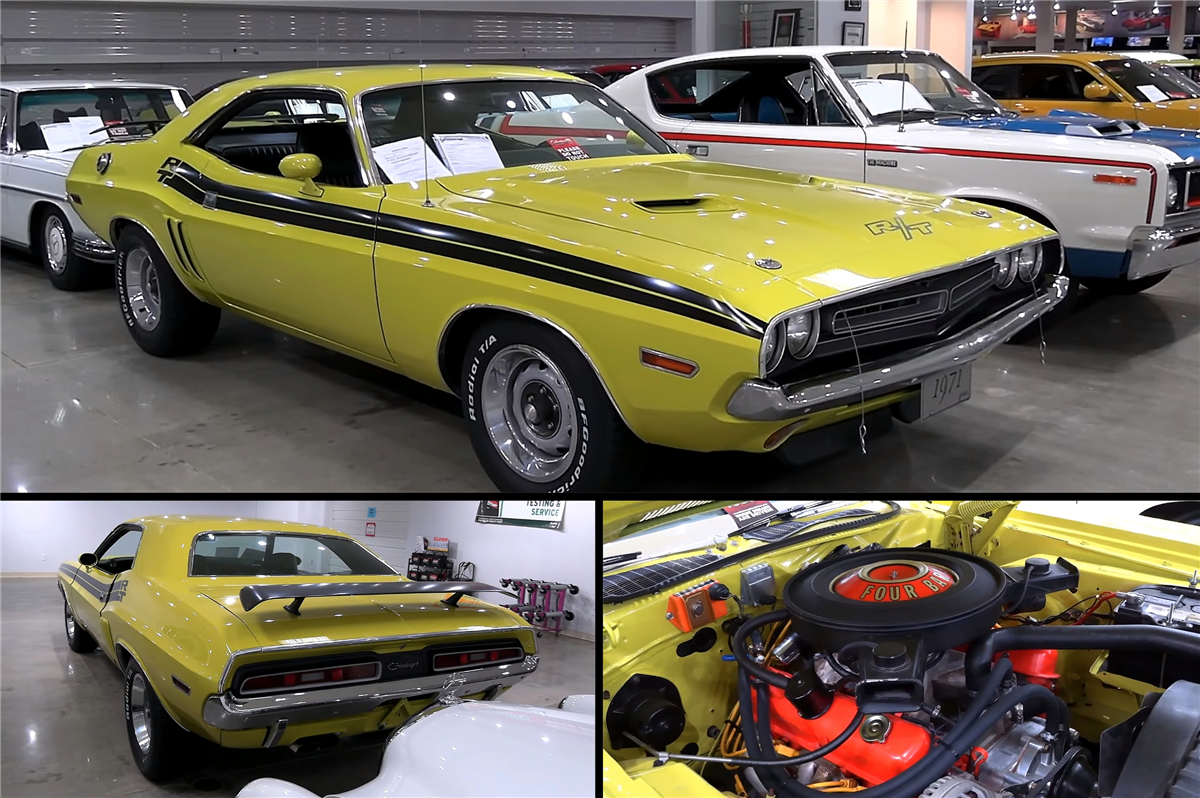The original Dodge Challenger was a touch late to the muscle car scene, having been introduced for the 1970 model year. Additionally, the Challenger’s golden-era muscle car privileges ended at the end of 1971, even though Chrysler continued to produce the first-generation vehicle until 1974. At that point, Mopar stopped producing its high-performance engines.
In contrast to other Dodge models, the Challenger’s big-block V8 options were eliminated beginning in 1972. That year, the 318- and 340-cubic-inch (5.2- and 5.6-liter) small-block V8 engines were the only ones available. With only 150 and 240 horsepower, respectively, output was not very spectacular.
The Challenger lost three high-performance drivetrains at the end of 1972, starting with the 335-horsepower, 383-cubic-inch (6.3-liter) B-block. Dodge also discontinued the six-pack version of the 440-cubic-inch (7.2-liter) RB, rated at 390 horsepower. Finally, the mighty 426-cubic-inch (7.0-liter) HEMI, good for 425 horses, also went into the history books.

And that’s precisely why the 1970- and 1971-model-year Challengers are the most desirable and valuable iterations of the nameplate. The HEMI is obviously the top choice for collectors. And not just because the 426 V8 was the most potent mill available in the pony car. The HEMI Challenger is also very rare. Dodge sold only 356 units in 1970 and just 71 the following year.
The 1971 Challenger is scarcer regardless of powerplant. As insurance rates for high-performance vehicles increased, sales dropped dramatically compared to 1970. Deliveries dwindled from nearly 77,000 cars to just 27,377 units. And only 4,892 of these Challengers were ordered with the desirable R/T package.
In addition to 71 HEMI cars, Dodge sold 250 units equipped with the 440 Six Pack and nearly 3,500 Challengers fitted with the 383 V8. The four-barrel 440 was no longer available that year, but many people forget that Dodge offered a smaller mill on the 1971 Challenger R/T. I’m talking about the four-barrel 340-cubic-inch V8, which was optional on the base model in 1970.
With a horsepower rating of 275, the 340 was upgraded to R/T duty in 1971. Still, it wasn’t a very well-liked decision. Only 1,078 people chose the small-block V8, according to records, making it much less common than the 383. One of them vehicles is the Citron Yella example that is displayed here.
This 1971 Challenger R/T is a completely restored vehicle that is immaculate on the inside and exterior. Every aspect shows off how well the paint is done, and the R/T decals are all placed. I find the all-black inside to be a little boring, but at least it has nice features like leather upholstery, AM/FM radio, and bucket seats.

But the really cool thing about this Challenger is that it’s a very low-production example. Yes, I’ve already said that Dodge sold only 1,078 R/T 340 cars in 1971, but that number drops once we also include transmissions in the conversation. Specifically, 731 examples were ordered with the automatic, and only 34 left the factory with the three-speed manual. This hardtop is one of only 313 equipped with a four-speed manual.
It’s also painted a hue that’s a little unusual. Citron Yella (GY3) was one of around 20 colors that were available in 1971, and it appeared on only 4.2% of Challengers made in that year. Though far less wanted than High Impact colors like Plum Crazy, Hemi Orange, and Butterscotch, it was noticeably more popular than Top Banana.
Less than 1,200 vehicles were finished in Citron Yella, according to the majority of Mopar specialists, albeit the number above is not entirely correct. And only 13 of these vivid yellow vehicles result when we apply the same percentage to the number of 340/four-speed R/T cars. I mean, rare doesn’t really give it justice.
On the flip side, there’s no info on how original this car is and whether the V8 is a numbers-matching unit. But that won’t stop me from staring at this Mopar and wishing I could park it in my driveway. Check it out in the video below.
